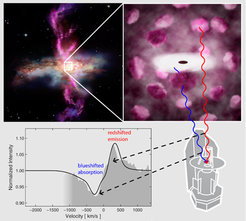General information

Description and aim of the workshop
Feedback from galactic winds driven by star formation or active galactic nuclei is a crucial ingredient in cosmological models of galaxy evolution. These models have been developed with little observational guidance on the physical processes involved. But recent advances in instrumentation have now led to dramatic observational progress. Far-infrared and millimeter observations have, for the first time, revealed massive molecular outflows that may be the long sought evidence for “quasar mode” AGN feedback in merging systems. In the nearest galaxies, the high resolution afforded by adaptive optics is spatially resolving the kinematics of outflows in the regions from where they are launched. Even at high redshift, when the Universe was less than half its current age, sensitive spatially resolved observations have uncovered outflows originating from individual star forming sites within galaxies, establishing the origin of superwinds observed previously only on >10kpc scales.
The purpose of this conference is to bring together researchers working on galactic winds across a wide range of scales, environments and cosmic epochs, to provide a firm observational grounding from which the next generation of feedback models can be developed. Fundamental questions about how winds are launched and driven in different environments, and whether they can quench star formation on galactic scales, will be addressed in the light of the latest observations of molecular, atomic and ionized gas. The impact of these developments will be put in a broader theoretical framework to address the role played by outflows in galaxy evolution at low and high redshift. This conference will pave the way for future detailed studies, focusing on the synergy between observations & theory.
Outline of topics
- Winds from Galactic HII regions and local starbursts
- Different wind phases
- Launching and driving winds in different environments
- Halo Gas Flows and the Galaxy-IGM interaction
- Impact on galaxy evolution at low and high redshift
International SOC
- Prof. A. Shapley (UCLA, USA)
- Prof. R. Maiolino (Cambridge, UK)
- Prof. S. Veilleux (Univ. Maryland, USA)
- Prof. T. Heckman (Baltimore, USA)
- Prof. N. Murray (Univ. Toronto, Canada)
Local SOC / LOC (MPE, Germany)
- Dr. Richard Davies
- Dr. Eckhard Sturm
- Dr. Linda Tacconi
- Prof. Reinhard Genzel
- Dr. Natascha Förster-Schreiber
- Dr. Dieter Lutz
- Dr. Leonard Burtscher
